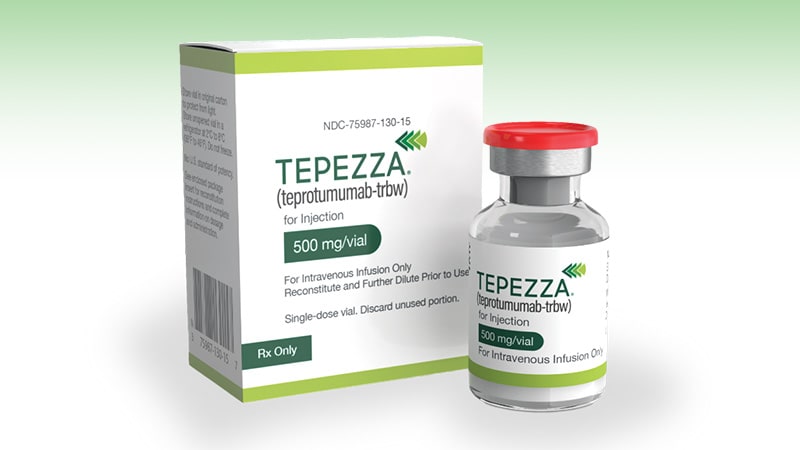Fitness
Teprotumumab Gives Lasting Relief from Thyroid Eye Disease

Nearly 2 years after their final transfusion with the IGF-IR inhibitor teprotumumab (Tepezza), 82% of patients with thyroid eye disease did not need further treatment for their symptoms, research presented today at ENDO 2024 revealed.
“Thyroid eye disease is a lifelong autoimmune disease that can worsen or flare, regardless of how it has been treated,” said George Kahaly, MD, PhD, professor of medicine and endocrinology at Johannes Gutenberg University Medical Center in Mainz, Germany.
Kahaly and colleagues investigated whether patients would experience sustained improvements in potentially distressing symptoms such as proptosis and diplopia after being treated with a full course (eight infusions over 24 weeks) of teprotumumab.
For their analysis, they analyzed pooled clinical trial data beyond the 24-week treatment period for patients who received the full course in the phase 2/3 (OPTIC) and OPTIC Extension (OPTIC-X) studies. The treatment included intravenous infusions of teprotumumab (10 mg/kg of body weight for the first infusion and 20 mg/kg for subsequent infusions) once every 3 weeks for 21 weeks, with the last trial visit at week 24.
Similar to week 24 results, 51 weeks after therapy (week 72) most participants maintained response to teprotumumab for the composite outcome (51/57, 89.5%); clinical activity score (52/57; 91.2%); diplopia (35/48; 72.9%); proptosis (38/56; 67.9%); and overall response (37/56; 66.1%).
Overall, during the 99 weeks of follow-up, the longest to date, 82% of 106 reporting patients did not need additional thyroid eye disease treatment post-teprotumumab therapy (eg, steroids, remedial periocular surgery, or an additional course of teprotumumab if 2-mm proptosis improvement from baseline not maintained).
Adverse effects were consistent with the known safety profile of teprotumumab. Four cases of hyperglycemia were newly reported during the follow-up, three of which were resolved and one was ongoing, as the patient discontinued the study due to a flare. Three cases of hearing impairment were newly reported, two of which were determined to be unrelated to the therapy.
“As physicians consider treatment approaches for their thyroid eye disease patients, they now have longer-term data to support the use of teprotumumab in appropriate patients,” Kahaly said.
The study was sponsored by Amgen, which manufactures teprotumumab.










